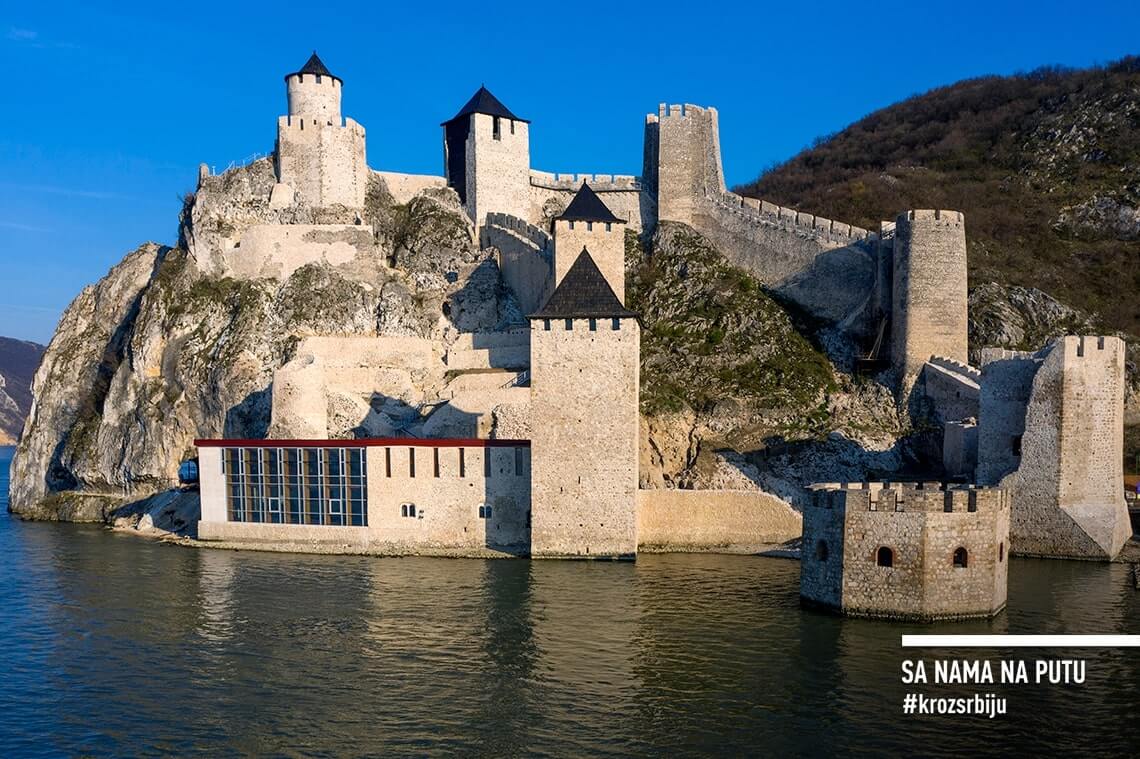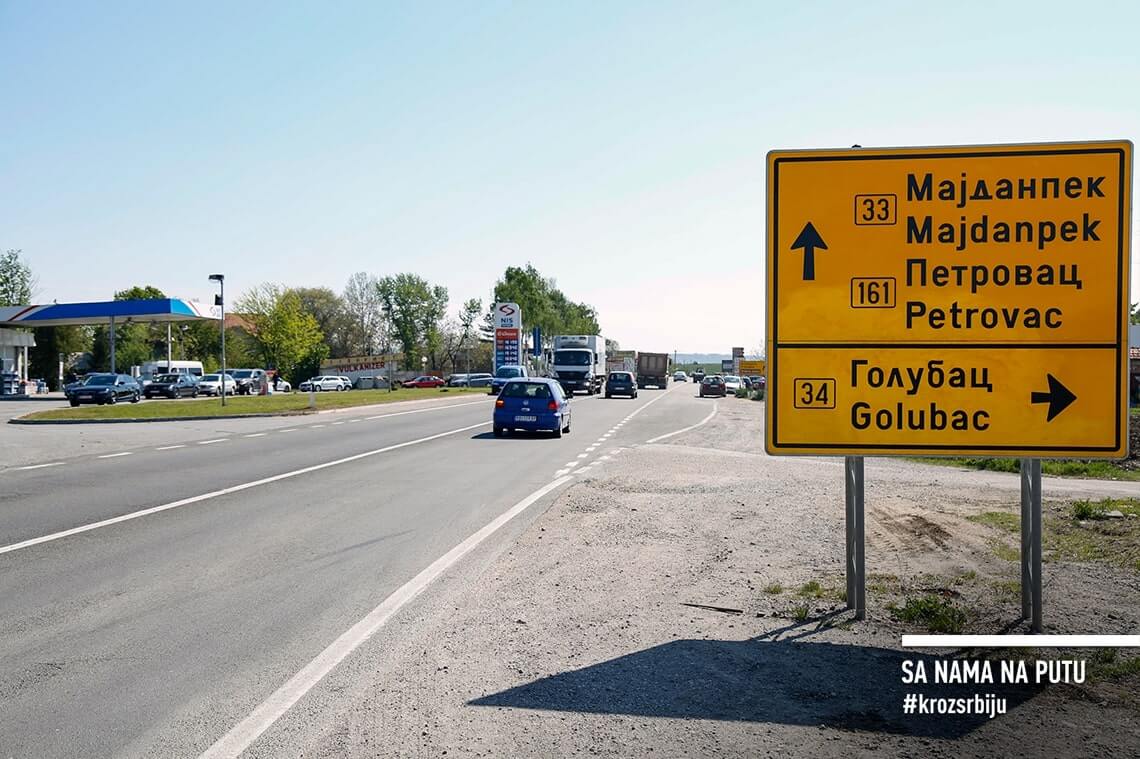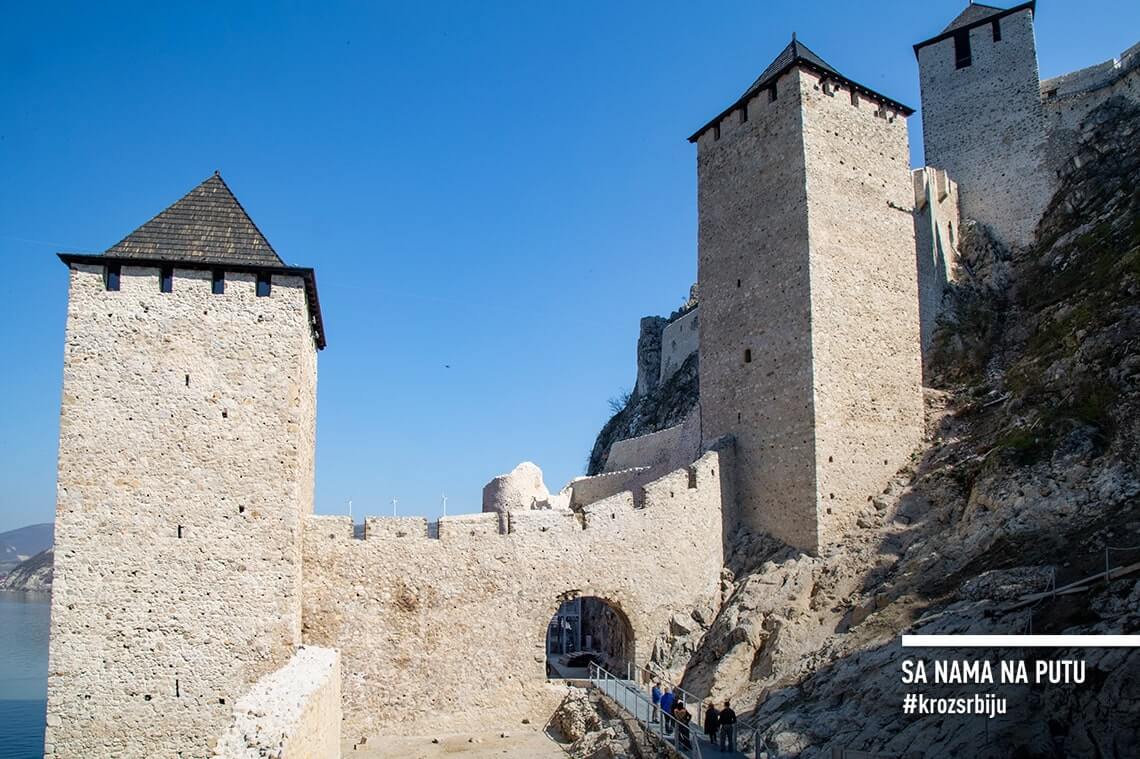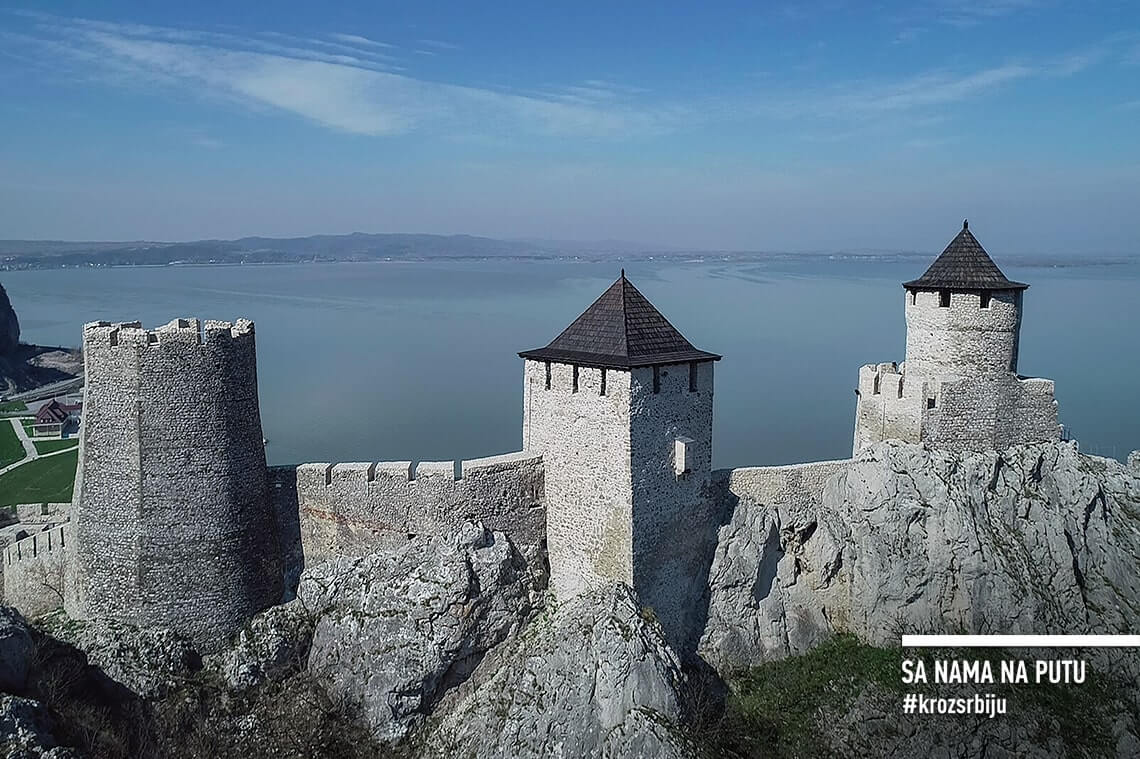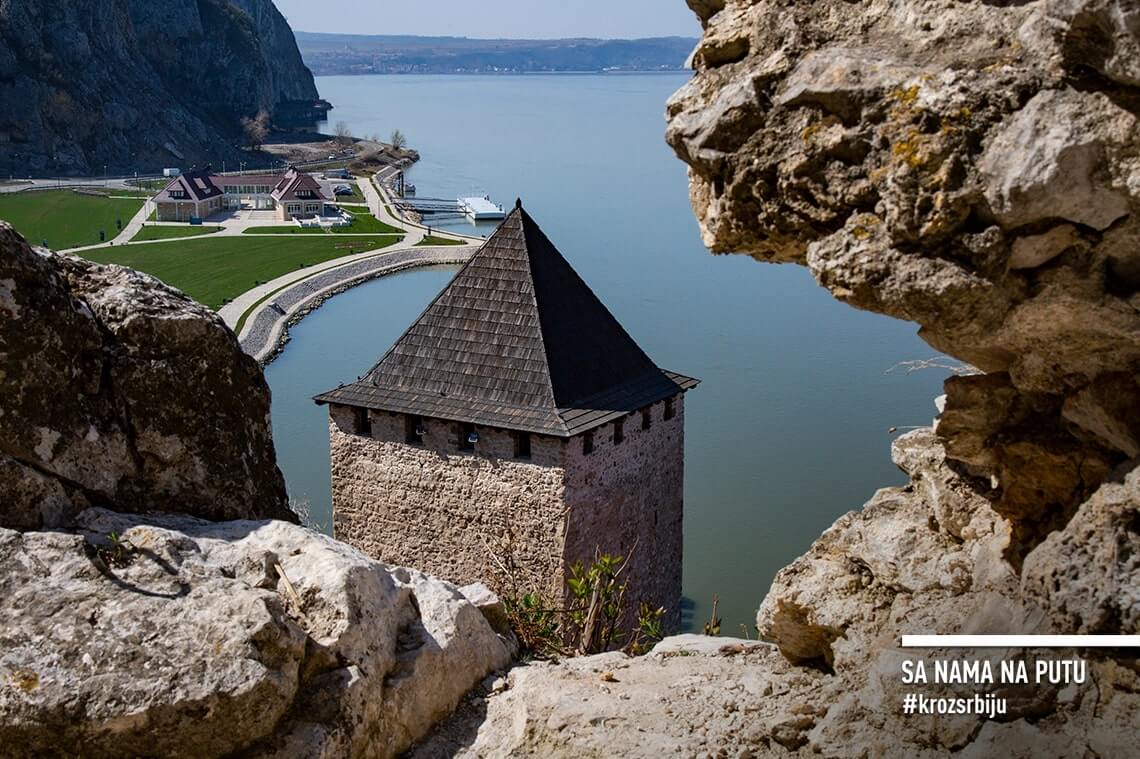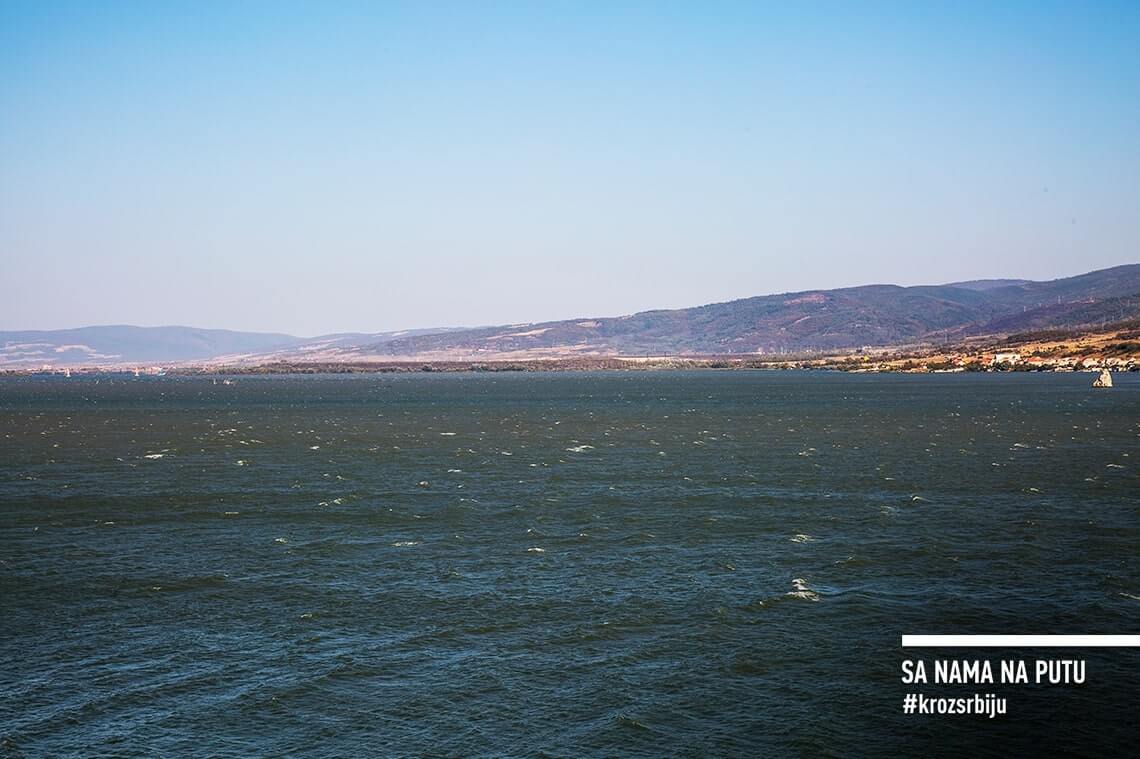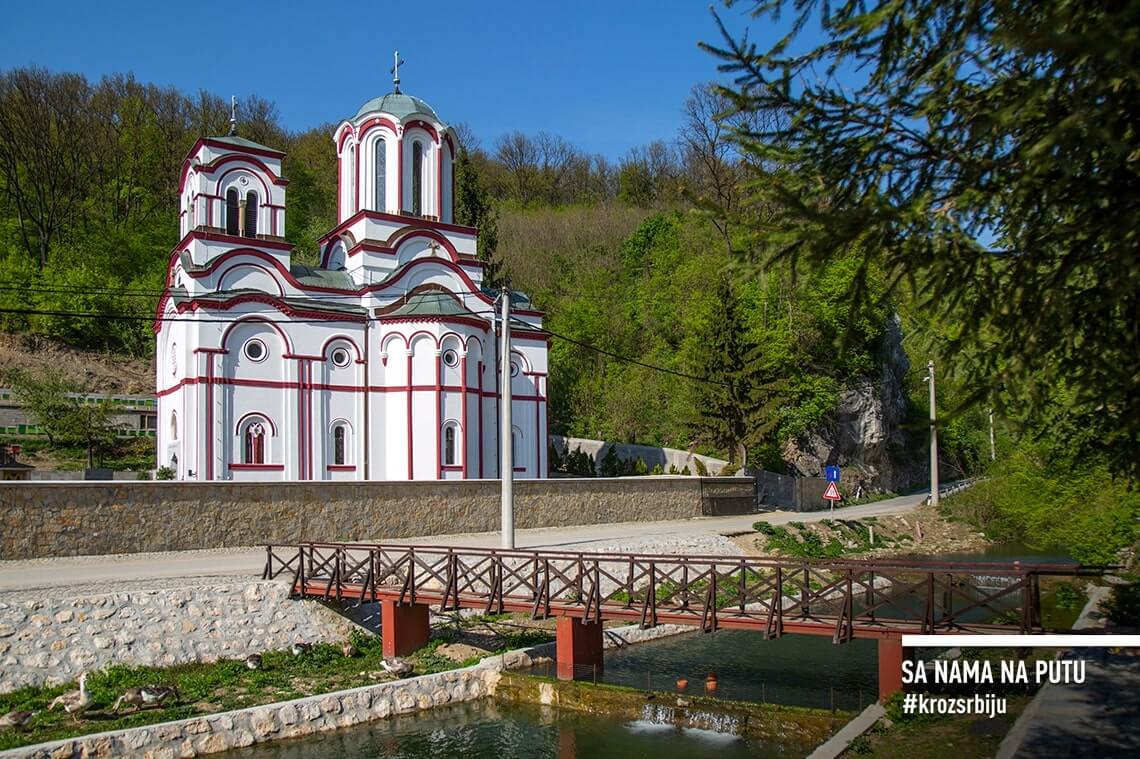We are proud to present the content that will take you on a tour of the most beautiful natural monuments and cultural and historical sites of Serbia. Our first destination is the Golubac fortress, a medieval fortification, which has been reopened to visitors after five years of reconstruction.

So, let’s set off
Our starting point is Belgrade; however, for all those not coming from the towns surrounding the fortress, it is best to join Belgrade-Niš motorway (E-75), and, on the 65th kilometer from the capital, take the exit to Požarevac (the toll for a passenger car is 200 dinars). After 16 kilometer, you will pass by a NIS Petrol petrol station on your left, and here take the first exit on your right. There is a direction sign showing the way to Golubac (34).

Now, you are driving down the IB class state road 34 Požarevac-Veliko-Gradište-Golubac-Donji Milanovac and, over the next 48 kilometres, there is hardly any chance of getting lost, given that all roundabouts on the route and upon entering Veliko Gradište are properly marked with direction signposts. Along the entire route, the ride is leisurely, without any challenging sections, of course provided observance of speed limits and increased attention in settlements. Enjoy the countryside and resist the lure of two detours, one to Viminacium and the other to Srebrno jezero (Silver Lake); leave these destinations for some other time, because you will find that even this one day that you set aside for touring Golubac is not enough. After 135 km of ride and somewhat less than two hours, we reach our destination.
Her majesty, Golubac fortress!
The first look towards the Danube is already breath-taking! At the very entry to Golubac, the vast waterfront of the mighty river and a well-organised promenade heading to the town centre will leave you with an impression of a seaside resort. This is the widest section of the Danube along its entire course through Europe (about 6,000m). And then, if you trace the turbulent water with your eyes to the right, as the base of a high massif, you will spot a mystical silhouette fortified with towers and ramparts, a fortress seemingly floating on the very surface of a large lake. It is virtually impossible to discern details from afar, which only enhances the surrealist spectacle…
Passing through the narrow town streets, after a few kilometers and a couple of high rocks leaning over the narrow pathway, we enter a plateau, a forecourt of “Her Majesty” Golubac fortress. The first impression in the face of the edifice is truly incredible, as if standing in front of some marvellous castle in Britain or Ireland – the carpet of evenly cut grass, benches in front of the new administrative building in which the fortress directorate is located, a souvenir shop, and a neatly furnished café with outdoor seating overlooking the whole width of the Danube – certainly an ideal place to take a rest after the trip and before embarking on your tour.

Not to forget, before entering the fortification there is one more “trifle” to do – you have to buy the entrance tickets. The complex itself comprises three walking zones, depending on the level of difficulty of the ascent, and it is up to you to determine the one that you can endure.
Further information on the layout of zones and which entrance ticket allows you to access which zone is available on the official presentation of Golubac fortress.
So, now we have the ticket and the ADVENTURE is about to start. Or not! Before stepping into the Medieval period, here are some basic facts about the Golubac fortress; we leave details and interesting facts to you to discover – that is the beauty of visiting this jewel of the history of the Balkans.
History of the fortress
Golubac is a medieval fortification erected at the very entrance to the Đerdap gorge (Iron Gates), a natural setting from which all land and river ways, formerly connecting the East and the West, could be easily regulated. The first mention of the fortress in historical sources was with Hungarian crew in 1335. Although the town was set up before that, it is not known when and who actually built it. In the Middle Ages, it was the major prize in many battles, primarily between the Ottoman empire and the kingdom of Hungary. In 1867, it was turned over by the Turks to Mihailo Obrenović, at the time the prince of Serbia.
The adventure may start
We enter the fortress!!! As “addicted” adventurers, we opt for the toughest zone – the black one, and clambering the tower number 1, nicknamed “Hat tower”. This certainly does not mean that you should leave out “Knight towers”, “Cannon towers”, “Palaces”, and so on. Walk slowly and try feeling the spirit of the times, try imagining how, many centuries ago, this place was teeming with people in medieval clothing, how the warriors fired cannons and arrows to repel attacks. Your imagination will certainly not let you down at this point, however make sure to take as many photos as possible. Wherever you look, everything is so scenic – and each shot is perfect! See our gallery at the bottom of the page – maybe you will be inspired and follow the example.

After an extensive tour of the towers and exhibition in the “Palace”, take at least a 10-minute break to recap, because the true excitement is yet to come. An experienced guide will join us on our way to conquer the highest peak of the tower, not only to make sure that we climb up and come down in “one piece”, but also to give us plenty of intriguing historical facts and interesting details along the way, which cannot be found on Google.
Conquering the “Hat tower”
The first third of the route is “relatively easy” – we ascend metal stairs, quite effortlessly passing by tower number 4, where the difficult section of the route begins. The metal stairs are now replaced with stone steps, actually improvised, fitted with chains on both sides to serve as handrails, and there are several obstacles that you must overcome by climbing up and down narrow ladders. While climbing, remember to stop and take a look back from time to time, because, as you keep climbing up, the view of the tower base and the Danube, wide as a sea, is truly astonishing! The last third of the route requires the “free climbing” skills and, at some sections, you need to think well which leg to place on which ledge, but do not be discouraged; if you cannot manage on your own, you have the guide to assist you. During the last section, you will not have many chances to look back; however, upon finally reaching the top – a small-sized plateau in front of the “Hat tower”, you will forget all obstacles you left behind, and here is the reason why.

Let yourself be overwhelmed with the feeling as if you climbed the top of the world, and enjoy the view of the Danube at its widest point and the “Iron gate” on your right (where the Danube is the narrowest and which is the starting point of Đerdap gorge). After touring the “Hat tower” itself – a castle in the air, and after a short break, we start descending slowly. It is difficult to find the words to describe the strong feeling of being in a place which is a silent witness of centuries-long, exciting, abundant history of this region. How many warriors of different nation must have tread here, how many of them stayed here forever? Soldiers, noblemen, tradesmen, travel writers, craftsmen, masons, and the like…
After three to four hours of sightseeing and climbing steep rocks inside the medieval fortification, walking the winding path with light steps we leave the ramparts, but turn back every 5-10 meters to imprint the image of the Golubac Fortress in our memory, the edifice which is definitely among the top five in Serbia and is a must-see.
A break
Now what? It is time to recap, go through the photos and pick the best ones for Instagram, Facebook, etc., and all this on the terrace of “Zlatna ribica” restaurant, in the centre of Golubac (again and always overlooking the Danube – the sea).

Do not let yourself be put off by fact that the restaurant is located on the bus station – the food is fairly good, service is excellent, and prices affordable (a full-course lunch for two costs around 2,000 dinars). If you are in transit, of course there is a possibility to stay overnight.
The adrenalin starts leaving us, and, after a “zen” meditation on the restaurant terrace, with still 3-4 hours of daylight left, and overwhelmed with impressions, we do not feel like going back to the hustle and bustle of the city. When we talked to Iskra Maksimović, director of Golubac fortress, earlier that day, she recommended visiting Tumane Monastery, only 9 kilometers away from Golubac town.
Tumane monastery

This monastery, also called “Ostrog of the Đerdap”, is sacred to people, acclaimed as a place of miraculous healings owing to the relics of Venerable Zosimus and Saint Jacob. The erection of the monastery is linked to a glorious hero, Miloš Obilić. Just before the Battle of Kosovo, Miloš accidentally inflicted fatal wounds to hermit Zosimus the Saint, a famous monk from the faraway Sinai. As an act of repentance, Miloš started building the edifice over the Saint’s grave, to be later finished by the folks after he was killed.
Opposite to the monastery church is a reception-inn, which was adapted from the former monastery watermill, while the ancient hermitage of Saint Zosimus is located one kilometer from the monastery. A mini zoo, which the youngest visitors find most appealing, gives the monastery a particular charm.
Following the visit to Tumane, we return to Golubac just to catch another glimpse of the Danube and the memorable fortress.
